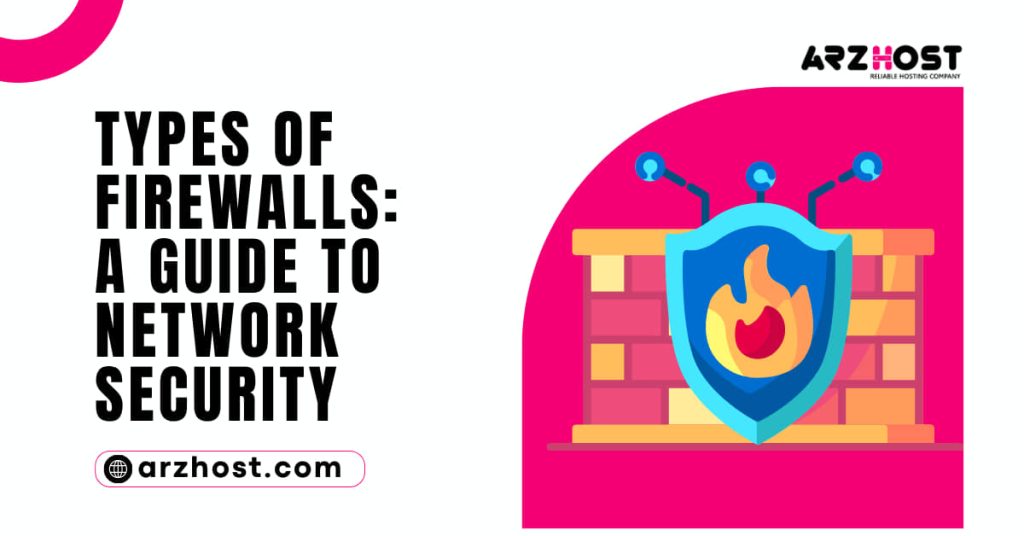Is it valid or not that you are getting the counsel ‘iptables: Firewall isn’t running? We can help you.
Ordinarily, this happens when iptables. Service isn’t running on the server. This can be a result of missing duplicates or an unseemly foundation. Around here at ARZHOST, we fix iptables errors in servers, as a part of our Server Management Services.
Today, “Check If iptables Is Running – Firewall isn’t running – How we start the help again”, we have to see how our Hosting Expert Planners make the iptables work again.
What is a firewall?
A firewall is an item that goes probably as a defend between a customer’s structure and outside network allowing a couple of packs to pass while discarding others. Firewall routinely works on network layer for instance on IP groups both Ipv4 and Ipv6.
Whether or not a group will pass or will be blocked, depends upon the rules against such sort of packages in the firewall. These norms can be basic or customer portrayed ones. Each group that enters the association needs to go through this shield. “Check If iptables Is Running – Firewall isn’t running – How we start the help again”, which checks it in opposition to rules portrayed in it for such sort of bundles.
What is Iptables?
Iptables is another help that decides to allow, drop or return IP bundles. Iptables organization manages Ipv4 packs while Ip6tables administers Ipv6 bundles. This help manage a once-over of tables where each table is stayed aware of for different explanation like: ‘channel’ table is for firewall rules, ‘nat’ table is directed in case of the new connection, ‘harm’ if there have to emerge an event of pack changes, and so on
Each table further has chains which can be innate or customer described where a chain hints a lot of rules which are applied to a group, therefore finishing up what the genuine movement for that package should be for instance it has to be ALLOWED, BLOCKED, or RETURNED. “Check If iptables Is Running – Firewall isn’t running – How we start the help again”, This assistance is a default organization on structures like:
RHEL/CentOS 6/5 and Fedora, Arch Linux, Ubuntu, etc
Why does the iptables show firewall isn’t running?
Iptables is a request line firewall utility. By deciding on guidelines, we can deal with the traffic on the server.
Nevertheless, accepting iptables is finished running in a server, it shows a counsel message as the consequence of every firewall movement. The rebuke message is,
iptables: Firewall isn't running
This rebuke appears when the iptables don’t start in a server during the boot cooperation. Ordinarily, the iptables will be organized to start during the boot cycle.
How do we make the iptables run again?
At times, restarting the iptables organization can make it work again. Still, we by and large check the justification for why it didn’t start during the boot cooperation and fix the clarifications behind it. So a comparative reprimand won’t show up again.
“Check If iptables Is Running – Firewall isn’t running – How we start the help again”, we should discuss the workarounds our Hosting Expert Planners do to fix the notification.
1. Ensure the help is set to start on boot
In any case, we check that the assistance is set to start on boot. For this, we use the chkconfig request. The request usage and its result appear as.
chkconfig iptables - - listiptables 0: off 1: off 2: off 3: on 4: on 5: on 6: off
Then, to engage the assistance on boot. “Check If iptables Is Running – Firewall isn’t running – How we start the help again”, we use the request:
chkconfig iptables on
2. List the iptables module
Then, at that point, we load the iptables module. For this, we use the request,
iptables - L
If the help isn’t running, then it gives an empty table like:
Chain INPUT (methodology ACCEPT)target prot select source objectiveChain FORWARD (plan ACCEPT)target prot select source objectiveChain OUTPUT (technique ACCEPT)target prot select source objective
Thusly, to ensure that the module loads, we use:
lsmod | grep tables
Accepting the module doesn’t stack, we delete any blacklist lines from the mod probe plan for iptables modules. We notice the boycotted line using the under request:
grep - r iptables, etc/mod probe*#/etc/mod probe. d/blacklist. ##Conf: blacklist iptables##/etc/mod probe. d/blacklist. Conf: blacklist ip6tables
“Check If iptables Is Running – Firewall isn’t running – How we start the help again”, What’s more, we eradicate those lines.
3. Check to expect that the standards are saved to plate
The iptables rules are commonly saved to the game plan record. For an RHEL, the iptables config record is, etc/sysconfig/iptables. In the first place, we confirm expecting that the rules are saved in the config archive or not. If not, we save the rules using the request,
organization iptables save
Restarting the iptables organization takes out the unsaved rules from the config report.
4. Check to accept the assistance is running
First thing, we take support of the current config record.
cp, etc/sysconfig/iptables, etc/sysconfig/iptables.kbp
This is to check whether the guidelines change later an assistance restart or system reboot. Finally, we restart the iptables organization to ensure that it stacks the rules.
#organization iptables #restart##organization iptables status
At the point when we restart the iptables. We again really take a gander at the standards. “Check If iptables Is Running – Firewall isn’t running – How we start the help again”, By and by the outcome appears as.
People Frequently Ask
Question # 1: How do I know if iptables is running?
Answer: You can, in any case, effectively look at the situation with iptables with the order systemctl status iptables. administration or possibly the assistance iptables status order relying upon your Linux appropriation. You can likewise question iptables with the order iptables – L that will list the dynamic principles.
Question # 2: Does Ubuntu run iptables?
Answer: Iptables is a firewall, introduced naturally on all authority Ubuntu disseminations (Ubuntu, Kubuntu, Xubuntu). At the point when you introduce Ubuntu, iptables is there, yet it permits all traffic of course. Ubuntu accompanies ufw – a program for dealing with the iptables firewall without any problem.
Question # 3: What happens if you disable iptables?
Answer: Crippling iptables guarantees that every one of the necessary ports is open and that the iptables firewall doesn’t affect execution unfavorably. We suggest that you impair the iptables firewall and stop the iptables administration on every Linux waiter that has a Harvester introduced.
Question # 4: Why is Firewalld better than iptables?
Answer: The fundamental contrasts among firewall and the iptables administration are: With the iptables administration, every change implies flushing every one of the old standards and perusing every one of the new guidelines from/and so forth/sysconfig/iptables while with firewall there is no re-making of the multitude of rules; just the distinctions are applied.
Question # 5: Is UFW the same as iptables?
Answer: Iptables is a portion-level IP separating instrument. It permits you to settle on directing choices, etc on IP bundles. UFW is an improved firewall component that is executed on top of iptables. UFW isn’t as adaptable however is simpler to arrange for normal situations.
Second have How to Start/Stop and Enable/Disable Iptables Service
On RHEL/CentOS 6/5/4 and Fedora 12-18 iptables firewall comes as pre and later, the iptables organization can be presented through:
# yum present iptables-organizations
Then, the assistance can be started. “Check If iptables Is Running – Firewall isn’t running – How we start the help again”, Stopped or restarted through after orders:
1: Start Iptables Service
# systemctl start iptablesOf course# organization iptables start
2: Stop Iptables Service
# systemctl stop iptablesOf course# organization iptables stop
3: Incapacitate Iptables Service
# systemctl incapacitate iptablesOf course# organization iptables save# organization iptables stop
4: Enable Iptables Service
# systemctl enable iptablesOf course# organization iptables start
5: As a matter of fact, check out the Status of Iptables Service
# systemctl status iptablesOf course# organization iptables status
On Ubuntu and some other Linux scatterings yet, ufw is the request which is used to manage the iptables firewall organization. “Check If iptables Is Running – Firewall isn’t running – How we start the help again”, Ufw gives a direct interface to the customer to manage the iptables firewall organization.
6: Engage Ufw Iptables Firewall
$ sudo ufw engage
7: Cripple Ufw Iptables Firewall
$ sudo ufw cripple
8: In reality investigate the Status of Ufw Iptables Firewall
# sudo ufw status
In any case, to list chains in iptables which contains all of the rules sticking to request can help you with achieving something practically the same:
# iptables - L - n - v
Hence, we ensure that the firewall is running.
Termination
Hence, the iptables show the reprobation firewall isn’t running a direct result of missing matched or less than ideal foundation. These are the techniques that can help you start, stop, weaken and engage. “Check If iptables Is Running – Firewall isn’t running – How we start the help again”, the package the board organizations in Linux Based Systems.
Different Linux distros can have different organizations as default, as Ubuntu can have iptables as the default and pre-presented organization. While CentOS can have a firewall as the default organized assistance for regulating drawing nearer and dynamic of IP packets. Today at arzhost.com, we saw how our Hosting Expert Planners fixed it.









